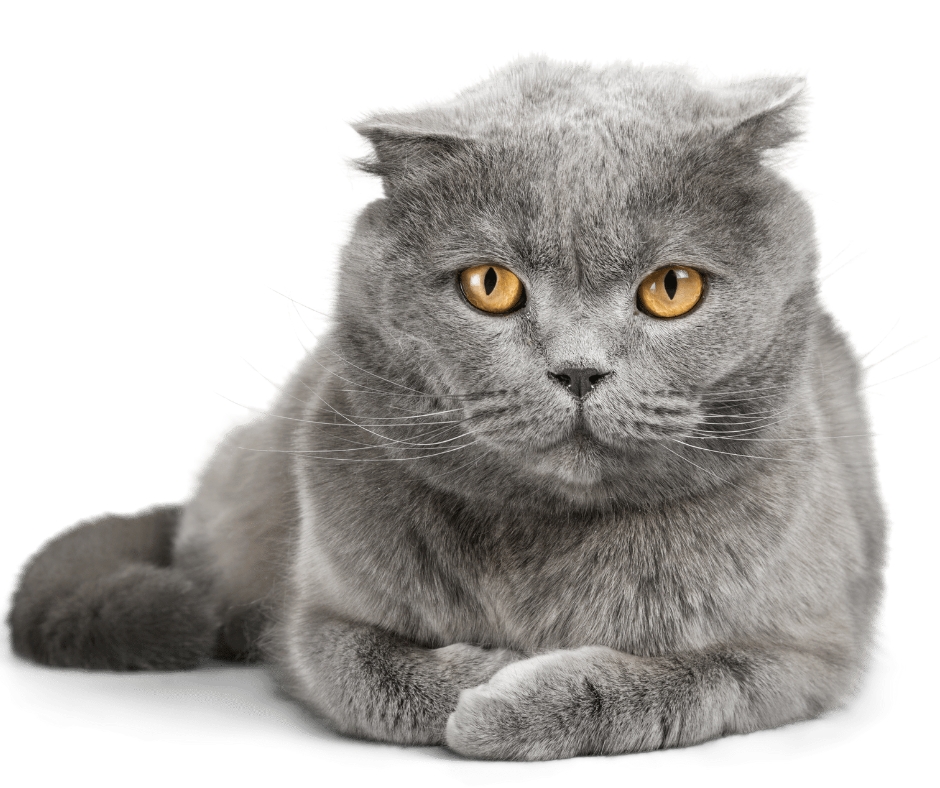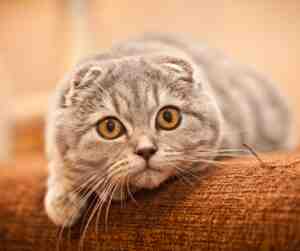Introduction to the Scottish Fold Cat Breed: A Brief History
Ah, the Scottish Fold. With their unique, folded ears and round, owl-like eyes, these cats are truly a sight to behold. But where did they come from? Well, the story begins in Scotland (surprise, surprise) in the 1960s. A shepherd named William Ross spotted a white barn cat named Susie with peculiar folded ears. Intrigued, Ross adopted one of Susie’s kittens, and thus began the lineage of the Scottish Fold cat breed.
The Scottish Fold cat breed was initially called “lop-eared,” but was later renamed to the more dignified “Scottish Fold,” in honor of their homeland and their most distinctive feature. The breed was officially recognized by the Cat Fanciers’ Association in 1973. Today, Scottish Folds are beloved worldwide for their unique charm and personality.
Understanding the Unique Physical Traits of Scottish Fold Cats
The most distinctive feature of the Scottish Fold cat breed is, of course, their folded ears. This unique trait is caused by a natural genetic mutation that affects the cartilage throughout the cat’s body. The result? Ears that fold forward and downward, giving the cat an “owl-like” appearance.
But the ears aren’t the only thing that sets Scottish Folds apart. They also have round, wide-set eyes that come in a variety of colors, and a medium-sized body with a well-rounded appearance. Their coat can be short or long, and comes in a wide range of colors and patterns.
The Distinctive Personality Traits of Scottish Fold Cats
Scottish Folds are known for their sweet, good-natured temperament. They are typically easygoing, affectionate, and enjoy spending time with their human companions. They are also known for their playful nature and intelligence.
These cats are also known for their unique “sitting” posture. They often sit up on their hind legs, like a prairie dog, or lie flat on their back with their legs in the air. This endearing behavior, combined with their unique physical traits, makes Scottish Folds one of the most charming and photogenic cat breeds out there.
The Genetic Science Behind the Scottish Fold’s Unique Ears
The unique folded ears of the Scottish Fold cat breed are the result of a genetic mutation. This mutation affects a gene called Fd, which is responsible for the development of the cartilage in the cat’s body. When a cat inherits this gene from both parents, the cartilage in their ears is affected, causing them to fold.
However, it’s important to note that not all Scottish Folds have folded ears. Some kittens born to Scottish Fold parents will have straight ears. This is because the Fd gene is incomplete dominant, meaning that a kitten only needs to inherit the gene from one parent to have a chance of developing folded ears.
Health Considerations for Scottish Fold Cats: What You Need to Know
While Scottish Folds are generally healthy cats, they are prone to a few health issues due to their unique genetic makeup. The most common is a condition called osteochondrodysplasia, which affects the development of the bones and cartilage. This can lead to arthritis and other joint issues, especially in the tail, legs, and of course, the ears.
It’s also important to note that Scottish Folds should never be bred with other Scottish Folds. This is because the gene that causes the ears to fold is also associated with these health issues. Breeding two Scottish Folds together increases the risk of these health problems in the kittens.
The Importance of Regular Vet Check-ups for Scottish Folds
Given the potential health issues associated with the breed, regular vet check-ups are crucial for Scottish Folds. Your vet can monitor your cat’s health and catch any potential issues early. Regular check-ups are especially important for detecting signs of osteochondrodysplasia and other joint issues.
Your vet can also provide advice on diet, exercise, and other aspects of care to help keep your Scottish Fold healthy and happy. Remember, prevention is always better than cure, especially when it comes to your furry friend’s health.
The Ideal Diet for a Scottish Fold: Nutrition and Health
Like all cats, Scottish Folds need a balanced diet to stay healthy. This should include high-quality protein, fats, and a small amount of carbohydrates. Many vets recommend feeding Scottish Folds a mix of wet and dry food to ensure they get a variety of nutrients.
It’s also important to monitor your Scottish Fold’s weight. These cats are prone to obesity, which can exacerbate joint issues and lead to other health problems. Your vet can provide advice on portion sizes and feeding schedules to help keep your cat at a healthy weight.
Grooming Your Scottish Fold: Essential Tips and Tricks
Scottish Folds are relatively low-maintenance when it comes to grooming. Their coat is typically short and dense, and doesn’t mat easily. Regular brushing can help keep their coat healthy and reduce shedding.
However, their unique ears do require some special care. Because of their unusual shape, they can be prone to wax build-up and infections. Regular cleaning with a vet-approved solution can help keep your Scottish Fold’s ears clean and healthy.
Understanding the Scottish Fold’s Social Behavior and Compatibility with Other Pets
Scottish Folds are typically good-natured and get along well with other pets. They are social cats and enjoy the company of their human family members. However, they are not overly demanding and are usually content to spend time alone or in the company of other pets.
That being said, every cat is an individual, and their behavior can be influenced by their upbringing and environment. It’s always a good idea to introduce new pets slowly and under supervision to ensure everyone gets along.
Training Your Scottish Fold: Effective Techniques and Strategies
Scottish Folds are intelligent cats and can be trained to perform simple tricks or use a litter box. Positive reinforcement, such as treats or praise, is the most effective training method for these cats.
However, it’s important to remember that cats are not dogs, and their motivation for learning is often different. Patience and consistency are key when training your Scottish Fold.
Common Misconceptions About the Scottish Fold Cat Breed: Debunking Myths
There are many misconceptions about Scottish Fold cats, largely due to their unique appearance. One common myth is that their folded ears affect their hearing. This is not true; Scottish Folds have normal hearing, just like any other cat.
Another common myth is that Scottish Folds are unhappy or in pain because of their folded ears. Again, this is not true. The folding of the ears is a natural genetic trait and does not cause the cat any discomfort.
Conclusion: Why Scottish Fold Cats Make Great Companions
In conclusion, Scottish Fold cats are a unique and charming breed. Their distinctive physical traits, combined with their sweet, good-natured temperament, make them a great choice for a family pet.
However, like all pets, Scottish Folds require care and attention to stay healthy and happy. Regular vet check-ups, a balanced diet, and proper grooming are all essential for these cats.
So, if you’re looking for a cat with a unique look and a friendly personality, the Scottish Fold could be the perfect choice for you. Just remember, every cat is an individual, and it’s important to spend time getting to know your new furry friend before making a decision.
For more information on the Scottish Fold cat breed, check out these articles from CFA and TICA.





